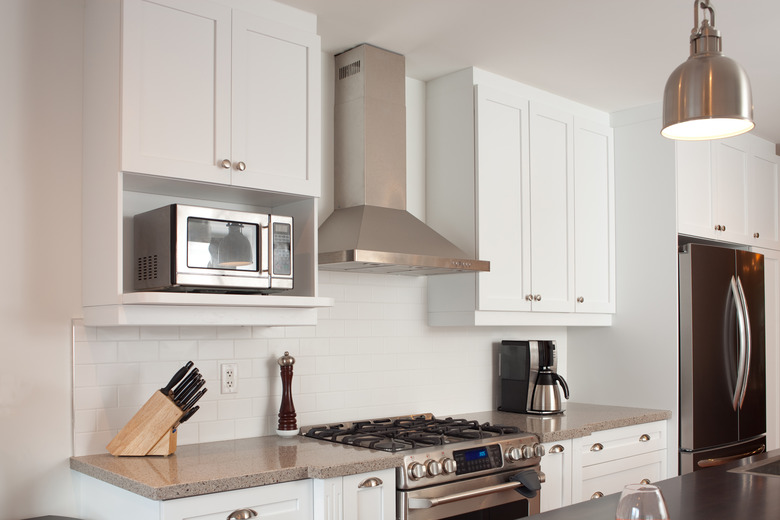Household Appliances That Contain Magnets
Although you may not give it much thought, you are surrounded by magnets all day, every day, and many of them are in your household appliances. Fortunately, magnets have no impact on human health and are generally safe to be around. It is possible, however, for magnets to interfere with implantable cardioverter defibrillators (ICDs) and pacemakers. As such, it's a good idea to be aware of which devices in your home contain magnets so you can exercise caution around them if necessary. Here's what you need to know.
Anything With a Speaker
Anything With a Speaker
If it has a speaker in it, it has a magnet in it. When it comes to household appliances, this means stereos, cellphones, headphones, television sets, digital assistants like Alexa, and literally anything else with a speaker contains magnets. This is because of how speakers work.
Sound is really just the movement of air. To make the air move, speakers use magnets to move objects back and forth and create air waves. In most speakers, this movable object is a fabric cone that moves back and forth. A permanent magnet gets mounted in the speakers along with an electromagnet that turns on and off at various intervals. When the electromagnet is on, it acts on the permanent magnet and moves the fabric cones to create sound waves.
Anything With a Motor
Anything With a Motor
Although there are exceptions, electric motors generally use magnets. In electric motors, magnets are used to make the motor spin and drive the moving parts. Your vacuum cleaner, for example, uses a motor to spin the brush roller and to create suction. The same is true of your blender, hair dryer, and electric can opener just to name a few appliances.
One of the most intricate magnetic appliances in your home is the DVD player. A typical DVD player uses a magnetic motor to open and close the tray, spin the disc, and properly position the head that reads the disc. A magnet is also used to control the head as it operates. That's four magnets inside a single appliance.
Your Microwave Oven
Your Microwave Oven
If your microwave contains a turntable, there is likely a small electric motor controlled by a magnet that turns it. But all microwaves also have two much more powerful magnets inside the magnetron unit. About 2 inches in diameter, these ceramic magnets direct the motion of the electrons as they cook your food. These magnets can be somewhat brittle thanks to their ceramic construction, but they're fairly strong, and many microwave repair people remove them from junked microwaves to use around the house or shop.
Your Old Doorbell
Your Old Doorbell
Fancy new doorbells can do all kinds of things, including capturing video footage of your guests. Old-fashioned doorbells work just as well, however, and work on a simple magnetic circuit rather than complicated electronics. In these doorbells, an electromagnet serves to create a solenoid. A solenoid is just a fancy word for a piston wrapped in magnetic wire.
When you press the doorbell button, an electrical current passes through the wire to activate the solenoid and turn on the magnetic field. This attracts the solenoid to a stationary piece of metal within the doorbell, pulling the solenoid toward the metal where it strikes a bell or chime. If the doorbell has multiple tones, it means that multiple magnets activate multiple solenoids to strike the different chimes and create different tones in sequence.
Appliances With Doors
Appliances With Doors
Sometimes, magnets do fancy things, like operate motors, but at other times, their purpose is much simpler. Appliance manufacturers sometimes use them for small but important tasks, like holding the door shut on your washing machine or clothes dryer. Kitchen cabinets and cupboards are also sometimes held closed with small magnets, as are some refrigerator and freezer doors.
